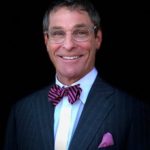
Formally referred to as rhinoplasty, nose job surgery is regarded as one of the most transformative facial plastic procedures a patient can undergo. The nose is nearly always visible and protrudes from the mostly level surface of the face. In is also situated in the mid-face region between the eyes and mouth, which people tend to look to when speaking with someone as these two features display emotion and play a role in non-verbal communication. A person’s nose can also change the look of other features. A large nose may cause other features to appear small and can alter the shape of the face. Once the nose has been altered, these optical illusions vanish.
Rhinoplasty for a Crooked Nose
A main staple in facial plastics is symmetry. Equal sides of a feature are scientifically shown to increase a person’s attractiveness. Additionally, a crooked nose can affect the functionality of the nose. The septum, located inside the nose, divides the two airways and may be compromised when this tissue becomes crooked, or deviated. The doctor can reshape the nose through internal structures to create an outward improvement in the symmetry of the nose through a rhinoplasty for a crooked nose.
Rhinoplasty for a Crooked Nasal Base and Nasal Tip
Trauma can shift the nose from its central location, which often results in a crooked nasal tip. While patients may face the same health issues as those with a crooked nose, a septoplasty (surgery for a deviated septum) may be insufficient in repositioning the nose. The doctor may need to perform a reconstructive rhinoplasty to offer the best correction. While a crooked nose may begin in the bridge, a crooked nasal base is a more extensive aesthetic issue. If the nasal tip is not corrected during the correction of the nasal base, Dr. Williams can refine the cartilage and create a more uniform and symmetrical tip.
Rhinoplasty for a Saddle Nose Deformity (Boxer Nose)
The nose is subject to trauma under many different circumstances. Abuse from another person, a sports injury, or even a car accident can lead to damage to the nose. When the septum is structurally compromised, the middle of the nose can collapse and cause it to look like a saddle, hence the name of the irregularly shaped nasal bridge. During a rhinoplasty, Dr. Williams can build up tissues that are present in the nose or harvest tissues from other areas of the patient’s own body to rebuild the nose.
Rhinoplasty for a Drooping Nose
A droopy nose can appear larger than it actually is because of the vertical space it takes up on the face. A droopy nasal tip also disguises the upper lip, making the pout appear smaller than it actually is. A downturned nose will also impact the look of the chin from a side profile view, causing it to appear weak and smaller than it actually is. If the patient has a recessed chin, a chin augmentation performed with an implant or with injectables can help to balance the face.
Rhinoplasty for a Large Nose
An over-projected nose distracts from the natural beauty of the face. The emphasis is placed on a single feature and may draw the attention away from sparkling eyes, shapely cheekbones, or a well-contoured set of lips. It can be a source of embarrassment for patients as others tend to notice the prominent feature above others. Women may feel that a large nose makes them appear more masculine as men typically display larger noses. It can also create an overall lack of harmony in the face that can only be corrected through surgery. Doctor Williams can adjust the size and shape of the nose to create a natural-looking feature than blends well with the rest of the face.
Rhinoplasty for a Nasal Hump
A nasal hump (called a dorsal hump) is common in people of varying ethnicities, which is sometimes why this correction is also part of an ethnic rhinoplasty. While patients may seek to straighten and slim the bridge of the nose, they may not wish to eliminate their ethnic look. In others, a nasal hump may not be due to their ethnicity but rather genetics or an injury. During the procedure, other areas of the nose may be adjusted or the focus may solely be on shaving down the nasal hump.
Rhinoplasty for a Pinched Nasal Tip
A pinched nasal tip is often the result of a rhinoplasty gone wrong. The initial surgeon may have been inexperienced or did not specialize in facial plastics, and Dr. Williams can fix the errors through a revision rhinoplasty. It is possible for the cartilage of the nasal tip to be over-modified, which can result in a small, pointed tip. This can cause the nostrils to appear wide in comparison with the lower part of the nose. Other patients may have been born with a pinched nasal tip and wish to correct it. Any time there is a lack of cartilage available in the nose, Dr. Williams will need to reconstruct the area with added materials. Cartilage can be removed from the patient’s ear or septum, and will be shaped and sutured into place in the nasal tip. While most patients seek to decrease the size of the nose, plastic surgery for a pinched nasal tip will often increase the size of this part of the nose.
Rhinoplasty to Refine the Nasal Tip
Patients may visit Dr. Williams’ office seeking to decrease the tip of the nose. The nasal tip may appear bulbous or another undesirable shape and size. The doctor can create changes in the underlying cartilage, though the final look will be dependent on the thickness of the skin of the nose. The doctor can perform changes through an endonasal procedure, where an endoscope is used to view the inner tissues of the nose. In other patients, the doctor may have to create a small cut on the external skin dividing the nostrils (exterior nasal septum).
Most of these changes can be performed during a single rhinoplasty procedure.
Schedule a Consultation with Dr. Williams
Dr. Edwin Williams, M.D., performs facial plastic surgeries and procedures for the patients at Williams Center.
In addition to the doctor’s practice in Albany, NY, Dr. Williams heads the Williams Rejuva Center in Latham, NY, which offers an array of minimally invasive and non-surgical procedures for aesthetic improvement and maintenance.
Call 1 (800) 742-2792 or fill out the Patient Consultation Form to book an appointment today.
